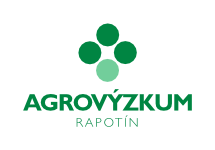Initiative for joint Norwegian-Czech project proposal „Antibiotic residues and resistance monitoring and removal for reduced agriculture impact and environment safeguarding“
Iniciativa k návrhu společného norsko-českého projektu „Sledování zbytkových antibiotik a rezistence k nim a jejich odstranění pro snížení dopadu zemědělské činnosti a ochranu životního prostředí“
Initiative for joint Norwegian-Czech project proposal „Antibiotic residues and resistance monitoring and removal for reduced agriculture impact and environment safeguarding“
Iniciativa k návrhu společného norsko-českého projektu „Sledování zbytkových antibiotik a rezistence k nim a jejich odstranění pro snížení dopadu zemědělské činnosti a ochranu životního prostředí“
Programme:
Czech-Norwegian Research Program CZ09 within the Norwegian Financial Mechanism 2009-2014
Programme Area:
Bilateral Research Cooperation
Programme Operator:
Ministry of Education, Youth and Sports of the Czech Republic
Promoter: Agrovýzkum Rapotín Ltd.
Partner:Norwegian Institute for Water Research
Bilateral initiative starting date: 15. 3. 2017
Bilateral initiative ending date: 30. 4. 2017
Total eligible costs of initiative: 461 ths CZK
Project decription
The project aims to promote scientific cooperation by strengthening bilateral relations between the Czech Republic and the Kingdom of Norway. In the project, two entities will be involved: Agrovyzkum Rapotin Ltd. (Promoter) and the Norwegian Institute for Water Research – NIVA (Partner). The project includes one short-term study trip: the Czech research team trip to the Norwegian Institute for Water Research. During the stay, a scientific meeting of experts from both institutes will be held, they will exchange knowledge in the following research areas:
1) Contaminants of emerging concerns (CECs)
“Constituents of emerging concern (CECs)” is a term used to include a broad range of unregulated chemical components found at trace levels in many of our water supplies, including surface water, drinking water, wastewater, and recycled water. Agrovyzkum Rapotin, Ltd., would like to focus on the tracking of CECs, such as antibiotics, in agriculture-affected wastewater. The research team of the NIVA and the Agrovyzkum Rapotin will discuss the technologies for CECs detection in wastewater, and treatment and technologies for removal of CECs.
2) Impact of Natural Organic Matter (NOM) on environment and drinking water production
Overuse of antibiotics in prophylaxis, prevention and therapy of livestock, together with inappropriate treatment of excrements, cattle slurry, dung, and manure, lead to increased contamination of environment and wastewater with antibiotics. The residual antibiotics in soil and wastewater cause increased stress on the selection of resistant microorganisms. New tools and methods for analytic determination of relevant antibiotics (extraction and separation techniques) and for isolation and determination of antibiotic-resistant microorganisms in various materials (excrements, organic fertilizers, soil, wastewater) will be discussed by both sides (Agrovyzkum and NIVA).
3) Methodology for safe treatment of fertilizers from agriculture production
Antibiotic traces and presence of resistant strains of microorganisms determined in excrements and organic fertilizers allow to monitor localities of agriculture areas, where organic fertilizers with residual antibiotics were applied. Evaluation of transfer residual antibiotics to vegetation, soil, and wastewater and changes in incidence and abundance of resistant strains will be estimated to predict rate of risk for environment pollution. Development of methodology for safe treatment of antibiotic-contaminated fertilizers from agriculture production to minimize impact on environment and water supplies will be discussed by both research teams.
Subsequently, the both research teams will discuss the capabilities to initiate proposal of a common project: „Antibiotic residues and resistance monitoring and removal for reduced agriculture impact and environement safeguarding“. The project should concern the research areas mentioned above.




